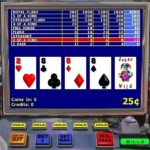How do slot machines use sound & graphics to keep you playing?
The potent visual technique slot designers employ is strategically implementing near-miss outcomes. When reels stop just one symbol away from a significant win, players experience a distinct neural response remarkably similar to an actual win. This deliberately engineered visual tease creates the compelling illusion that success is imminent, encouraging continued play despite mathematical odds remaining unchanged.
Modern slots amplify this effect through animation sequences that dramatize near misses. Symbols might wobble or flash, suggesting they might still change, or spotlight animations might highlight how close the player came to winning. These visual cues exploit the brain’s tendency to interpret near misses as skill development rather than random outcomes, fostering the misleading perception that players are “getting better” at a game fundamentally governed by random number generation.
Celebratory audiovisual stimulation
When players do win, slots deliver disproportionately elaborate celebrations relative to the prize amount. Even modest wins typically trigger dynamic animations, flashing lights, and triumphant sound sequences that stimulate the brain’s reward centres well beyond the monetary value received. This audiovisual celebration serves several psychological functions:
- It extends the emotional satisfaction of winning
- It creates memorable moments that players seek to replicate
- It draws attention from nearby players, encouraging social validation
- It masks the fact that many “wins” are less than the original bet
Players interested in exploring sensory design elements in various games with transparent return percentages can check gratixtechnologies.com to play rtp slot games.
Strategic sound design
The sound design in slot machines goes far beyond simple background music, employing sophisticated audio engineering techniques precisely calibrated to maintain engagement. Key elements include:
- Constant positive reinforcement through cheerful sounds for any interaction
- Harmonically pleasing sound combinations that create an environment of perpetual winning
- Rising sound patterns that suggest building momentum toward upcoming wins
- Volume modulation that increases during wins and bonus features
Visual movement and animation
The visual experience of modern slot machines employs continuous movement to maintain attentional capture, a principle borrowed from video game design. Even during idle moments, slots rarely remain static, incorporating:
- Subtly animated backgrounds that create visual depth
- Floating particles or light effects that draw eye movement across the screen
- Breathing animations on characters and symbols that suggest life
- Rhythmic pulses on potential winning lines or feature triggers
- Sequential lighting patterns that create unconscious anticipation
These perpetual motion elements prevent attention drift and create what psychologists call a “flow state,” where players become deeply immersed in the sensory experience, losing track of time and environmental awareness. This state is particularly conducive to extended play sessions.
Visual hierarchy
Slot designers employ strategic colour choices based on established psychological principles. Red and gold dominate many designs due to their cultural associations with wealth and prosperity. Visual hierarchies direct attention precisely where designers intend through brightness contrasts, movement, and size differentials.
The essential elements, betting controls, spin buttons, and winning symbols, typically feature the highest visual prominence through distinctive colouration and animation. This careful attention to visual hierarchy ensures players intuitively understand where to focus without requiring conscious thought, creating a frictionless experience that facilitates continued play.
Recognizing these psychological mechanisms allows for more informed decision-making and healthier relationships with games explicitly engineered to maximize engagement at every level of the sensory experience. The next time you play, pay attention to these elements; you’ll likely notice the subtle ways your attention and emotions are guided through careful audiovisual design.







